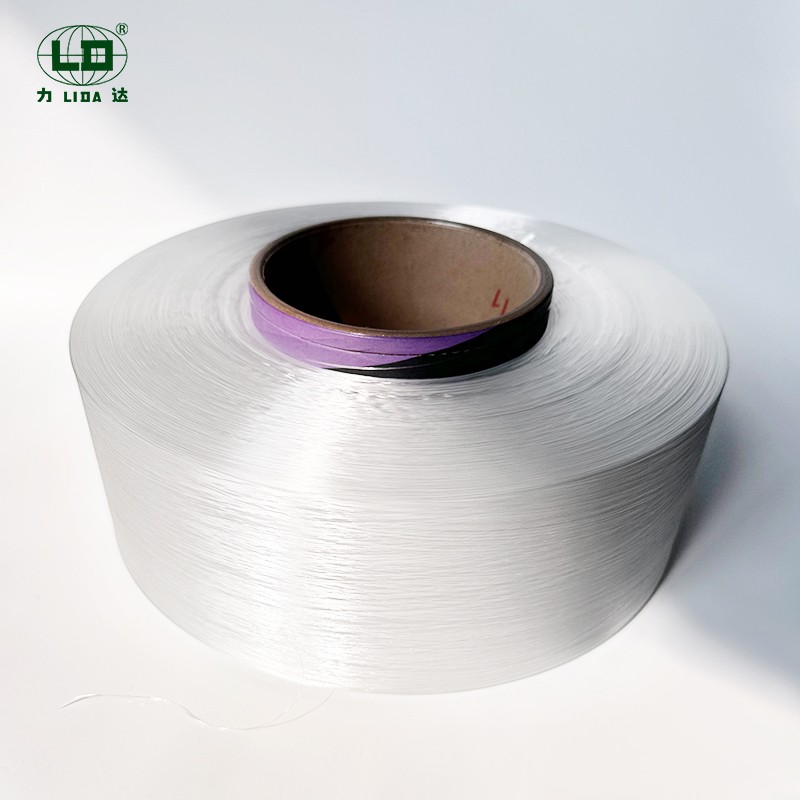The Versatility of Polyester Filament Yarn: Uses, Benefits, and Applications
2025-02-11
Polyester filament yarn is a type of synthetic fiber known for its strength, durability, and versatility. Widely used in a variety of industries, from fashion to automotive, polyester filament yarn has become a go-to material for creating products that require both resilience and flexibility. With its broad range of applications and benefits, it’s no surprise that polyester filament yarn continues to be a staple in manufacturing and production processes worldwide.
What is Polyester Filament Yarn?
Polyester filament yarn is made from long continuous strands of polyester fibers. These fibers are produced by melting polyester resin and extruding it through fine holes to form filaments. Unlike staple fibers, which are shorter and typically spun together to form yarn, filament yarns are smooth and continuous, offering a more uniform texture and appearance.
The filaments are then twisted or woven together to create yarn that can be used in a variety of textile applications. Polyester filament yarn can be used in both its raw form or further processed into a range of products such as fabrics, ropes, and even technical materials.
Benefits of Polyester Filament Yarn
1. Durability and Strength
One of the main advantages of polyester filament yarn is its high tensile strength, which makes it highly resistant to wear and tear. This makes it perfect for products that need to endure heavy usage, such as upholstery, outdoor fabrics, and industrial textiles.
2. Resistance to Moisture and Chemicals
Polyester filament yarn is highly resistant to moisture, which prevents it from absorbing water and becoming weakened. This resistance also makes it less prone to mildew or mold growth, a key benefit in products used in humid environments. Additionally, polyester is resistant to most chemicals, contributing to the longevity of items made from it.
3. Lightweight and Flexible
Despite its strength, polyester filament yarn is lightweight and flexible, making it an excellent choice for a wide range of applications. Its ability to be manipulated into different textures or finishes provides manufacturers with a wide variety of options when creating end products.
4. Cost-Effective
Polyester filament yarn is relatively inexpensive to produce compared to natural fibers like cotton or silk. This makes it a cost-effective solution for manufacturers looking to produce high-quality products without increasing costs.
5. Easy to Care For
Polyester is known for being easy to maintain. It’s resistant to shrinking, fading, and stretching, which helps products made from polyester filament yarn retain their appearance over time. This low-maintenance quality makes it a popular material for everything from clothing to home furnishings.
Applications of Polyester Filament Yarn
1. Fashion and Apparel
Polyester filament yarn is extensively used in the fashion industry, where it’s woven into fabrics such as satin, taffeta, and chiffon. It’s particularly valued for its smooth, shiny texture, making it a popular choice for eveningwear, formal attire, and high-fashion garments. Additionally, polyester filament yarn is often blended with other fibers to create fabrics with enhanced durability or specific textures.
2. Home Furnishings
Polyester filament yarn is frequently used in home furnishings such as curtains, upholstery, carpets, and bedding. Its durability, ease of care, and resistance to stains and fading make it ideal for creating long-lasting home textiles.
3. Industrial Textiles
In the industrial sector, polyester filament yarn is used in the production of strong and durable textiles, such as conveyor belts, tire cords, and industrial fabrics. The strength and resistance to chemicals and moisture make polyester filament yarn an ideal choice for applications where performance and longevity are key.
4. Automotive Applications
Polyester filament yarn is also used in the automotive industry to produce seat fabrics, airbags, and other interior components. Its strength and resistance to wear and heat make it a perfect choice for automotive textiles that must withstand constant use and exposure to various conditions.
5. Technical Textiles
Polyester filament yarn is used in the production of a variety of technical textiles, such as ropes, webbing, and geotextiles. Its ability to resist wear, moisture, and chemicals, combined with its lightweight and flexible nature, makes it highly suitable for specialized applications where strength and durability are paramount.
Sustainability and Innovation in Polyester Filament Yarn
With growing environmental concerns, the demand for sustainable and eco-friendly materials is on the rise. Polyester filament yarn is no exception, with many manufacturers now focusing on creating more sustainable production processes. This includes the use of recycled polyester, which helps reduce waste and the carbon footprint of polyester products.
Innovative technologies have also enabled the creation of more advanced polyester filament yarns with improved properties, such as greater elasticity, moisture-wicking capabilities, and enhanced UV protection. These advancements continue to expand the possibilities of polyester filament yarn across industries.
Conclusion
Polyester filament yarn is an incredibly versatile material that offers numerous benefits, including durability, resistance to moisture and chemicals, and ease of maintenance. From fashion to industrial applications, polyester filament yarn plays an essential role in the production of textiles used worldwide. As manufacturers continue to innovate and embrace more sustainable practices, polyester filament yarn will remain a key material in a wide range of industries, providing high-quality, cost-effective, and reliable solutions for various applications.



